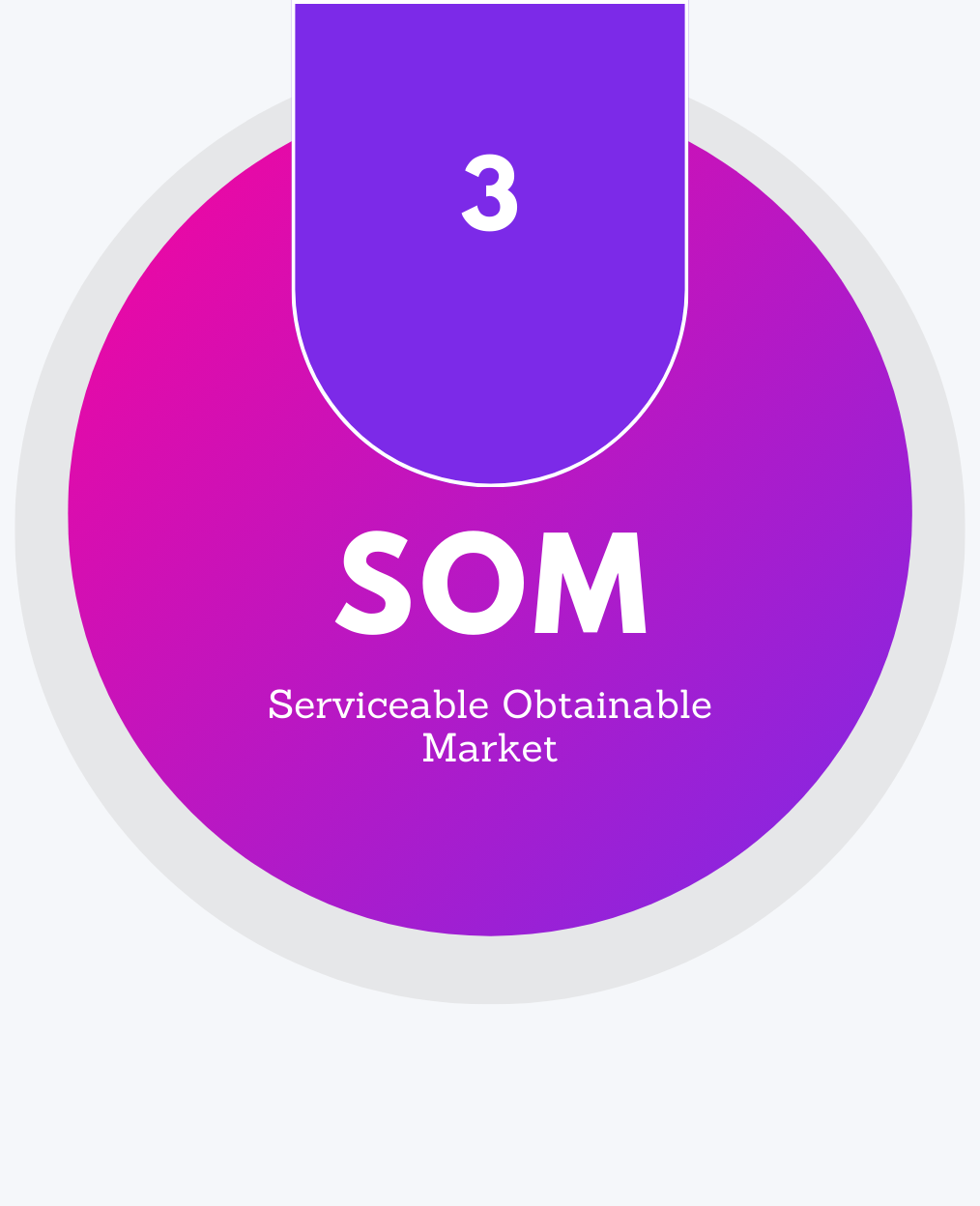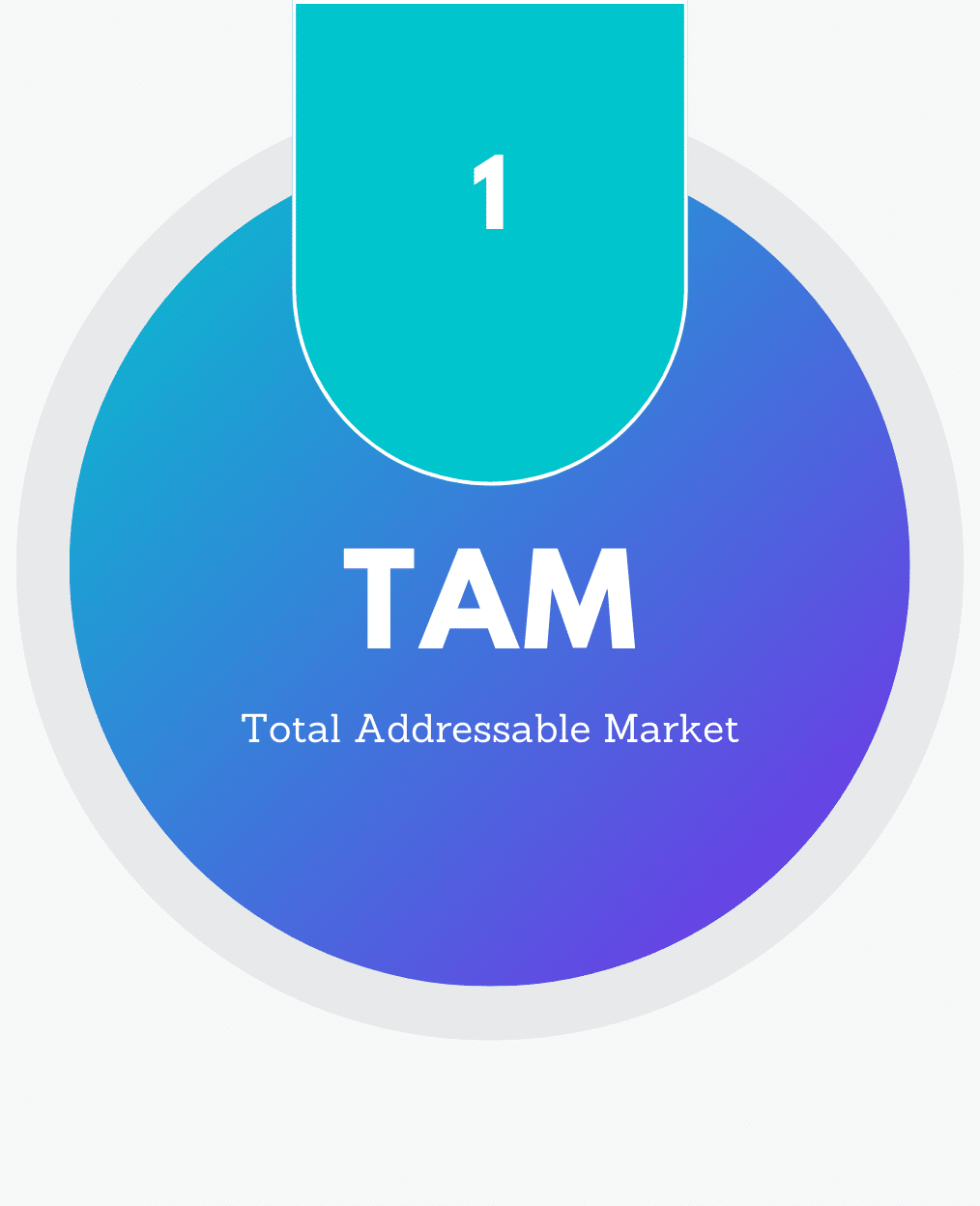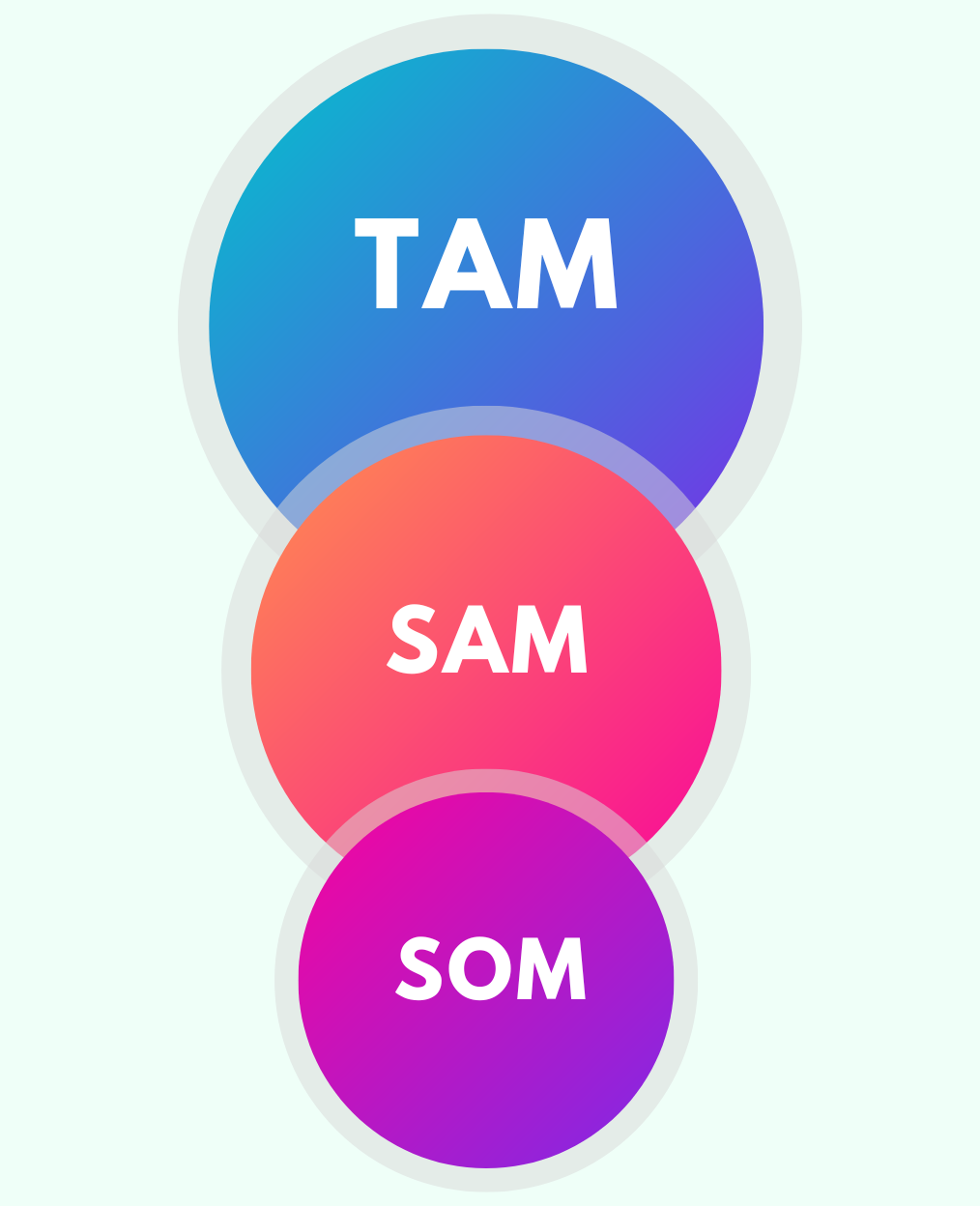
The Serviceable Obtainable Market, or SOM, is the portion of a market that a business can realistically reach. This relies on its current resources and strategies. which are key aspects covered in our Market Research Fundamentals guide.
Serviceable Obtainable Market is important because it helps a business set achievable revenue targets. Different from larger market sizes like Total Addressable Market (TAM) or Serviceable Addressable Market (SAM). It looks at the specific customers a business can reach with its products or services.
By understanding SOM, companies can make smart decisions about how to use their resources. They can also create focused marketing strategies to attract their ideal customers.
It provides a clear view of a company’s growth potential within its reach, based on what is realistically possible. This helps avoid overestimating market share and prevents wasted effort.
In summary, SOM allows businesses to see their true market opportunity. This way, they can focus their efforts on gaining market share in areas where they can succeed.
Explore our detailed guide to fully understand the differences between TAM, SAM, and SOM
Key Components of the Serviceable Obtainable Market
Understanding the Serviceable Obtainable Market requires a clear look at its main components. It focuses on the part of the market a business can actually serve and capture.
To define SOM, businesses need to think about three main factors.
First, they should consider the product or service they offer. Next, they must identify their specific market segment. Finally, they need to know the target customers they can reach.
- Product or Service: The product or service itself plays a major role in shaping SOM. The features, quality, and benefits of a product determine its appeal within the market. A business must consider how well its offering fits customer needs. This helps narrow the scope to a group of buyers with genuine interest and ability to buy.
- Market Segmentation: Market segmentation is the process of dividing a larger market into smaller, more focused groups. By segmenting the market, companies identify specific clusters of potential customers. This segmentation helps businesses target a specific part of the total market demand. This makes their SOM calculation more accurate.
- Target Customers: Target customers are the specific people or businesses that a company aims to serve. This includes those most likely to purchase based on their location, income, preferences, and needs. Knowing the exact audience helps companies refine their SOM, ensuring they only target customers who match their offering.
By examining these components, companies can define their SOM and plan accordingly. This approach helps them focus on achievable market share. It also sets realistic goals based on their product, market segment, and target audience.
How to Calculate Serviceable Obtainable Market (SOM)
Calculating the Serviceable Obtainable Market is essential for setting realistic revenue goals. This process begins with the larger market estimates, TAM and SAM. It then narrows them down to the actual market share a business can expect to capture.
Here’s a step-by-step guide to calculating SOM:
- Identify the Total Addressable Market (TAM). Begin by estimating the total revenue opportunity. This is what your product or service could earn if it served every potential customer in the market. This step gives a high-level view of the market size without any limitations.
- Define the Serviceable Addressable Market (SAM): Start with the Total Addressable Market (TAM) and focus on SAM. This includes the customers you can realistically reach. Remove any groups that you cannot reach because of geographic, logistical, or technological factors.
In the cloud computing industry, the Total Addressable Market (TAM) is about $675 billion, according to Statista. Small to medium-sized businesses represent 30% of this market. This means the Serviceable Addressable Market (SAM) is $202.5 billion.
If you think you can capture 5% of this market, your Serviceable Obtainable Market (SOM) would be around $10 billion.
Calculating SOM helps businesses focus on realistic revenue. It improves marketing strategies and investment choices based on what they can achieve.
Discover the full range of criteria venture capitalists use to evaluate TAM in our in-depth article: How Do VCs Evaluate TAM
Importance of SOM in Assessing Market Size and Growth Potential
Serviceable Obtainable Market is a critical metric when assessing both market size and growth potential. SOM gives a clear view of the real market a business can reach. It helps set realistic growth targets.
Here’s why SOM matters for assessing growth:
- Clear Market Size: It provides a clear view of market size. It helps businesses see the exact part they can realistically serve. This clarity allows companies to see their immediate opportunities and to avoid overestimating potential revenue.
- Realistic Growth Projections: By basing growth projections on SOM, businesses can set realistic expectations. This approach lowers the risk of using too many resources or planning for unrealistic growth. It helps companies grow steadily and sustainably.
- Informed Product Development: SOM data shows which market segments have the most potential for a specific product or service. This insight helps businesses create or change their products to better meet the needs of their market. This leads to higher customer satisfaction.
In summary, SOM enables businesses to assess their true market size and achievable growth potential. This information is vital for guiding business strategies, product development, and market positioning within a feasible and profitable scope.
Conclusion
The Serviceable Obtainable Market is a powerful tool for businesses aiming to understand their true market opportunity. It helps companies focus on the part of the market they can realistically capture. This focus sets clear and achievable goals.
It focuses on a smaller part of the total market demand. This helps businesses prioritize resources and align their products and services. They can also target their marketing efforts more effectively.
It also aids in making informed financial projections by highlighting the revenue potential within a company’s immediate reach. This stops businesses from overestimating their market size. It also helps them avoid wasting efforts on segments that are not reachable or profitable.
In a competitive environment, understanding SOM allows businesses to focus on real opportunities for growth, customer acquisition, and market penetration.
By focusing on a clear and achievable market size, businesses can increase returns. This approach helps build a strong foundation for long-term success.
FAQs
How does SOM differ from TAM and SAM?
Total Addressable Market (TAM): The total revenue opportunity if a product or service achieved 100% market share.
Serviceable Addressable Market (SAM): The segment of TAM targeted by a company’s products and services within its geographical reach.
Serviceable Obtainable Market (SOM): The portion of SAM that a company can realistically capture, considering competition and resources.
What factors influence the size of a company’s SOM?
Competitive Landscape: The number and strength of competitors in the market.
Company Resources: Available budget, workforce, and operational capacity.
Market Conditions: Economic trends, customer preferences, and technological advancements.
Marketing and Sales Capabilities: Effectiveness of marketing strategies and sales efforts.
A quick overview of the topics covered in this article.
Latest Posts
December 21, 2025
December 21, 2025
Subscribe to our newsletter
Get valuable insights and business guidance sent to your email.











